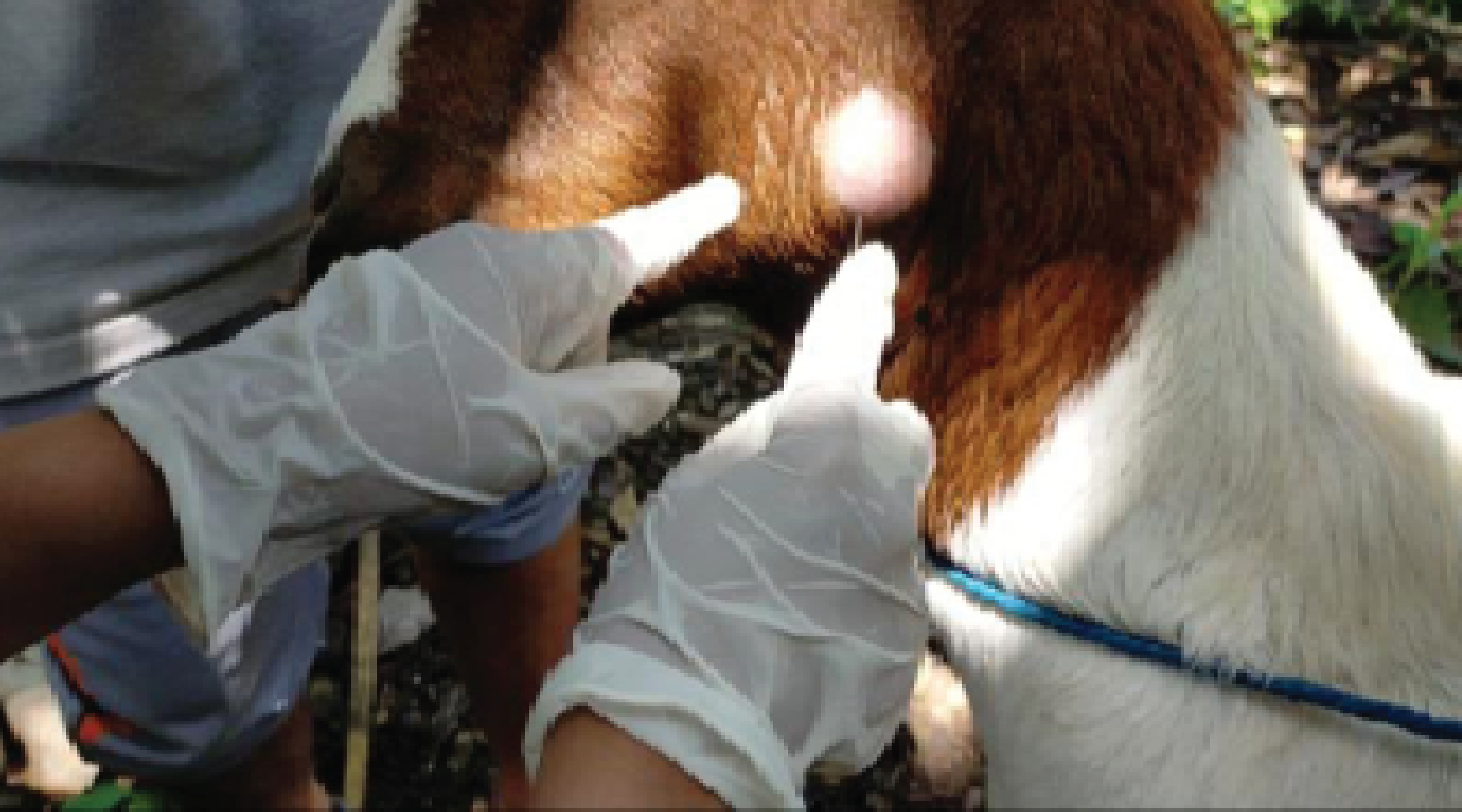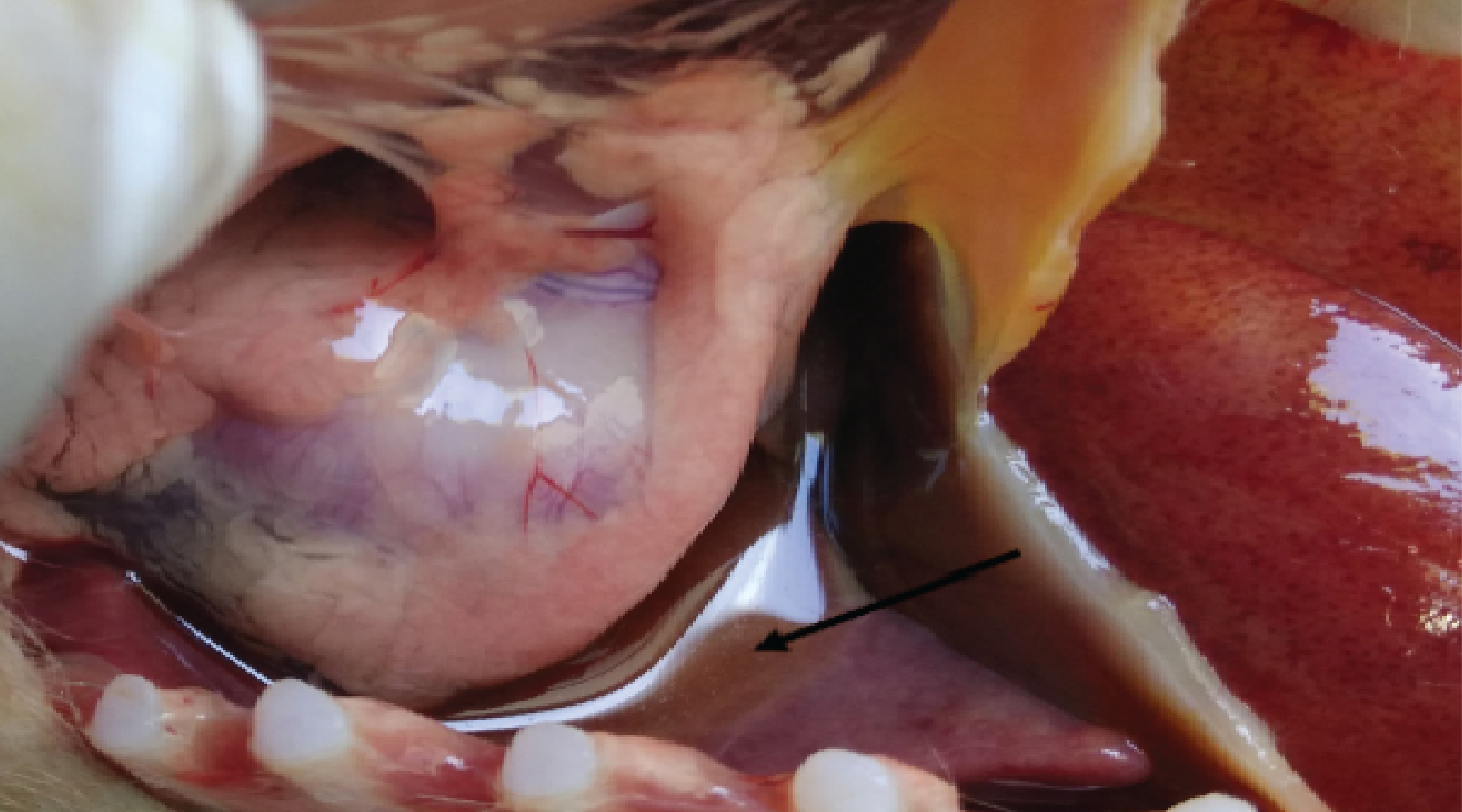Quality and Quantity of Dairy Cow Milk Production in View of Differences in Concentrate Use at KUD Kertajaya Kandangan, Kediri Regency, East Java

Downloads
Background: Differences in the use of concentrates in dairy cows cause differences in the quantity and quality of milk produced. Purpose: To compare the quality and quantity of milk between dairy cows fed concentrate A and concentrate B. Methods: This observation was carried out at KUD Kertajaya Kandangan Kediri using 40 cows with a ratio of 20 dairy cows fed concentrate A and 20 cows dairy cows fed concentrate B. The quality of cow's milk samples was tested using a lactoscan machine, and then the quantity was measured at the time of milking using a scaled milk can. Results: The results showed that the quality of dairy cows fed with concentrate A had an average pH of 6.495±0.176, milk specific gravity of 1,0241±0.0004 g/ml, a fat content of 5,241±2.614%, protein of 3,335±0.294%, non-solid fat of 8.542±0.518% and total solid of 13.707±2.612% with an average milk yield of 15.7±2.273 liters per day while the quality of dairy cows fed with concentrate B had an average pH of 6.425±0.102, milk Specific Gravity of 1,0244±0.0005 g/ml, Fat Content of 6,447±2.621%, Protein of 3.284±0.213%, non-solid fat of 9.134±0.6313% and total solid of 15.459±2.752%% with the average milk produced is 15.5±2.140 liters per day. Conclusion: The quality and quantity of milk of dairy cows fed concentrates A and B have a noticeable difference (P<0.05) in terms of solid nonfat (SNF) and total solids. Concentrate B has a higher percentage of solid nonfat and total solid than concentrate A.
Andriawan, T., Harjanti, D.W., and Sambodho, P., 2014. Hubungan Antara Konsumsi Serat Kasar Terhadap Produksi Dan Lemak Susu Sapi Perah di Peternakan Rakyat Kabupaten Klaten. Animal Agriculture Journal, 3 (3), 383–388.
Aprilia, R.M., Marjuki, M., and Hartutik, H., 2018. Evaluasi Kandungan Nutrien Konsentrat Yang Diberikan Pada Sapi Perah Rakyat Di Kabupaten Malang. Jurnal Nutrisi Ternak Tropis, 1 (1), 54–59.
Badan Standar Nasional Indonesia, 2011. Susu Segar-Bagian 1. Jakarta: Standar Nasional Indonesia.
Budiarsanan, I.-G.M. and Sutama, I.-K., 2001. Efisiensi Produksi Susu Kambing Pernakan Etawah. Presented at the Seminar Nasional Teknologi Peternakan dan Veteriner, Bogor: Pusat Penelitian dan Pengembangan Peternakan, Badan Penelitian dan Pengembangan Pertanian, Departemen Pertanian.
Larasati, D.A., 2017. Faktor yang Berpengaruh Terhadap Produktivitas Susu Sapi Perah di Desa Geger Kecamatan Sendang Kabupaten Tulungagung. Jurnal Geografi, 14 (1), 34–41.
Muktiani, A., 2017. Korelasi Antara Konsumsi Protein, Energi dan Bulan Laktasi Dengan Produksi Susu Sapi Perah di Kabupaten Semarang. Jurnal Litbang Provinsi Jawa Tengah, 15 (2), 153–160.
Nurhajah, A., Purnomoadi, A., and Harjanti, D.W., 2016. Hubungan Antara Konsumsi Serat Kasar dan Lemak Kasar dengan Kadar Total Solid dan Lemak Susu Kambing Peranakan Ettawa. Jurnal Agripet, 16 (1), 1.
Sandi, S., Desiarni, M., and Asmak, A., 2019. Manajemen Pakan Ternak Sapi Potong di Peternakan Rakyat di Desa Sejaro Sakti Kecamatan Indralaya Kabupaten Ogan Ilir. Jurnal Peternakan Sriwijaya, 7 (1), 21–29.
Saputra, F.T., 2018. Evaluasi Total Solid Susu Segar Peternak Tawang Argo Berdasarkan Standard Nasional Indonesia. TERNAK TROPIKA Journal of Tropical Animal Production, 19 (1), 22–26.
Vergi, M.D., Suprayogi, T.H., and Sayuthi, S.M., 2015. Kandungan Lemak, Total Bahan Kering dan Bahan Kering Tanpa Lemak Susu Sapi Perah Akibat Interval Pemerahan Berbeda. Animal Agriculture Journal, 5 (1), 195–199.
Copyright (c) 2023 Author(s)

This work is licensed under a Creative Commons Attribution-ShareAlike 4.0 International License.
- The journal allows the author to hold the copyright of the article without restrictions.
- The journal allows the author(s) to retain publishing rights without restrictions.
- The legal formal aspect of journal publication accessibility refers to Creative Commons Attribution Share-Alike (CC BY-SA).

Journal of Applied Veterinary Science and Technology is licensed under a Creative Commons Attribution-ShareAlike 4.0 International License





























